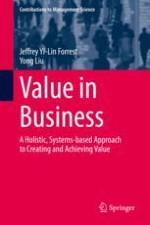2022 | OriginalPaper | Chapter
6. The Supply-Chain Ecosystem of a Firm
Authors : Jeffrey Yi-Lin Forrest, Yong Liu
Published in: Value in Business
Publisher: Springer International Publishing
Activate our intelligent search to find suitable subject content or patents.
Select sections of text to find matching patents with Artificial Intelligence. powered by
Select sections of text to find additional relevant content using AI-assisted search. powered by
